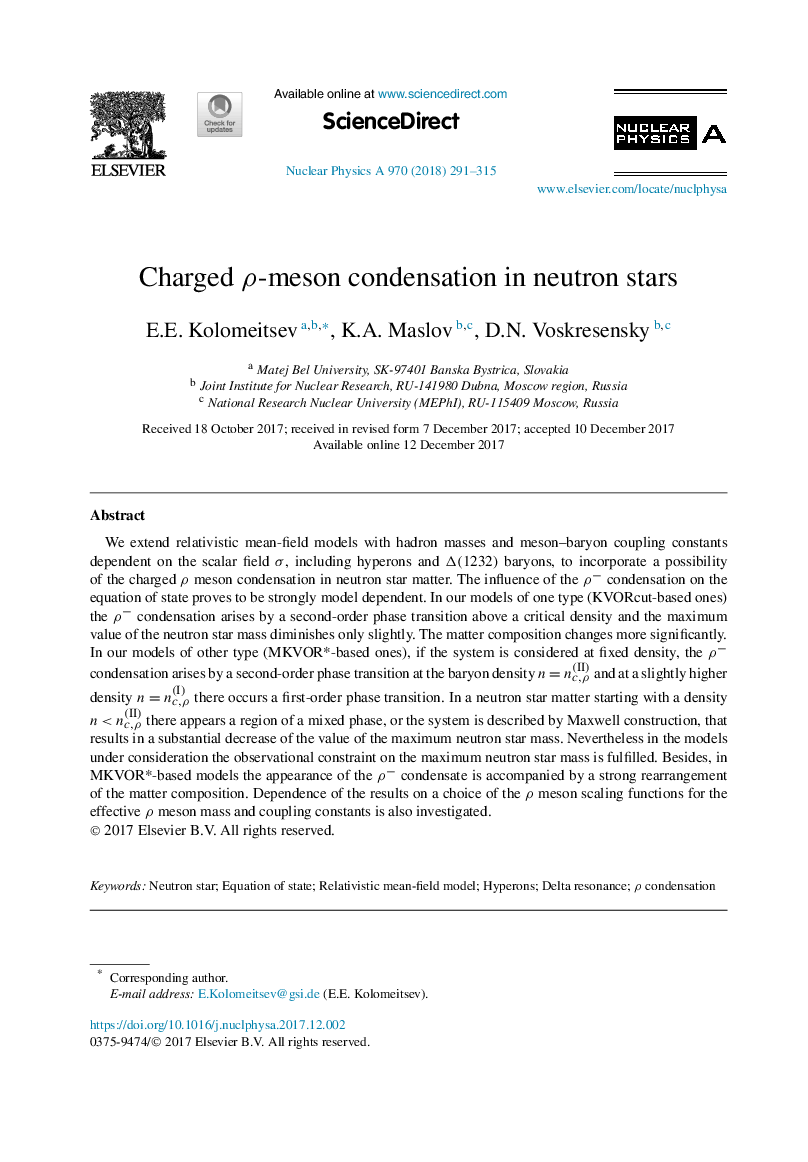| Article ID | Journal | Published Year | Pages | File Type |
|---|---|---|---|---|
| 8182829 | Nuclear Physics A | 2018 | 25 Pages |
Abstract
We extend relativistic mean-field models with hadron masses and meson-baryon coupling constants dependent on the scalar field Ï, including hyperons and Î(1232) baryons, to incorporate a possibility of the charged Ï meson condensation in neutron star matter. The influence of the Ïâ condensation on the equation of state proves to be strongly model dependent. In our models of one type (KVORcut-based ones) the Ïâ condensation arises by a second-order phase transition above a critical density and the maximum value of the neutron star mass diminishes only slightly. The matter composition changes more significantly. In our models of other type (MKVOR*-based ones), if the system is considered at fixed density, the Ïâ condensation arises by a second-order phase transition at the baryon density n=nc,Ï(II) and at a slightly higher density n=nc,Ï(I) there occurs a first-order phase transition. In a neutron star matter starting with a density n
Related Topics
Physical Sciences and Engineering
Physics and Astronomy
Nuclear and High Energy Physics
Authors
E.E. Kolomeitsev, K.A. Maslov, D.N. Voskresensky,
